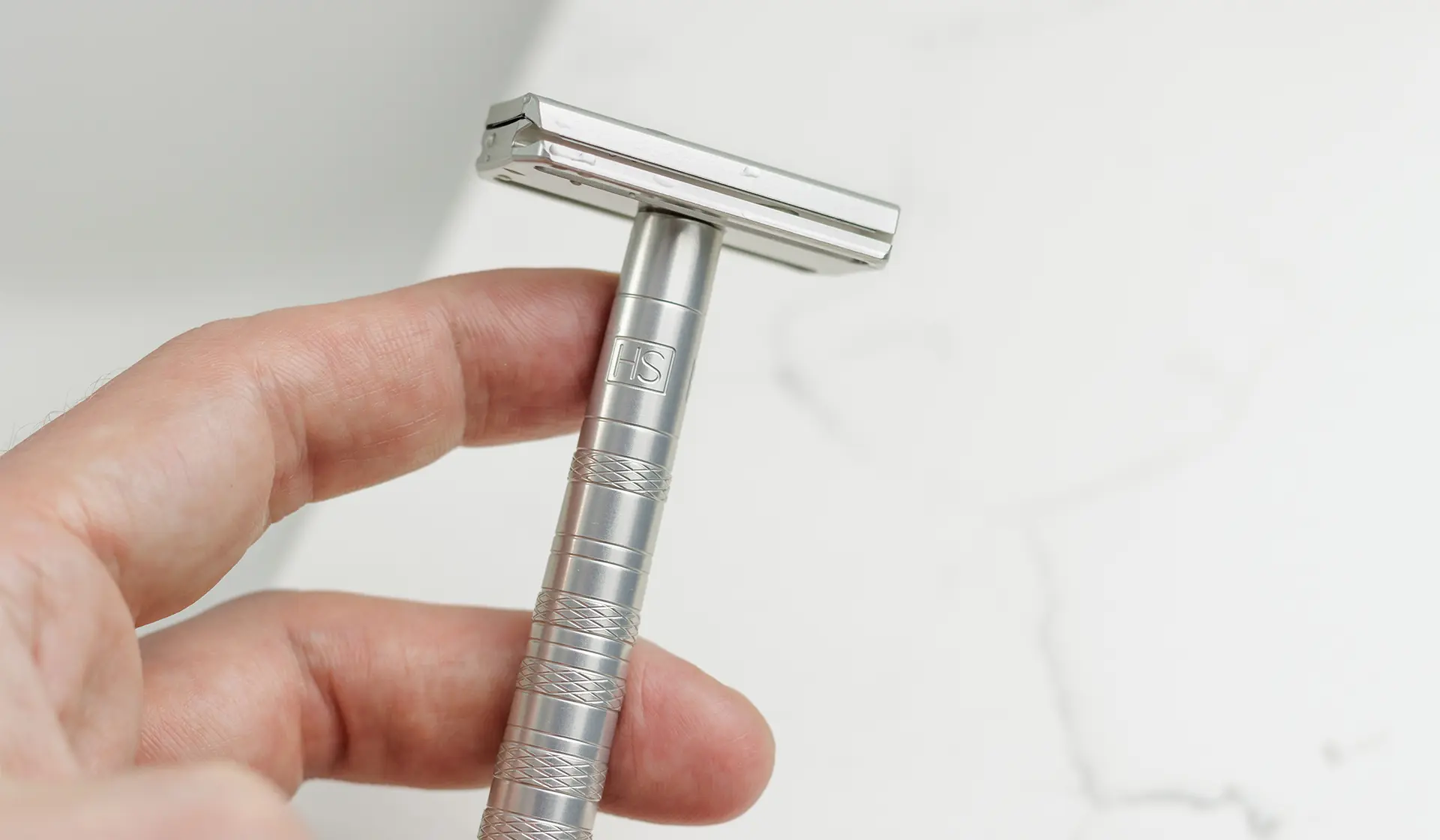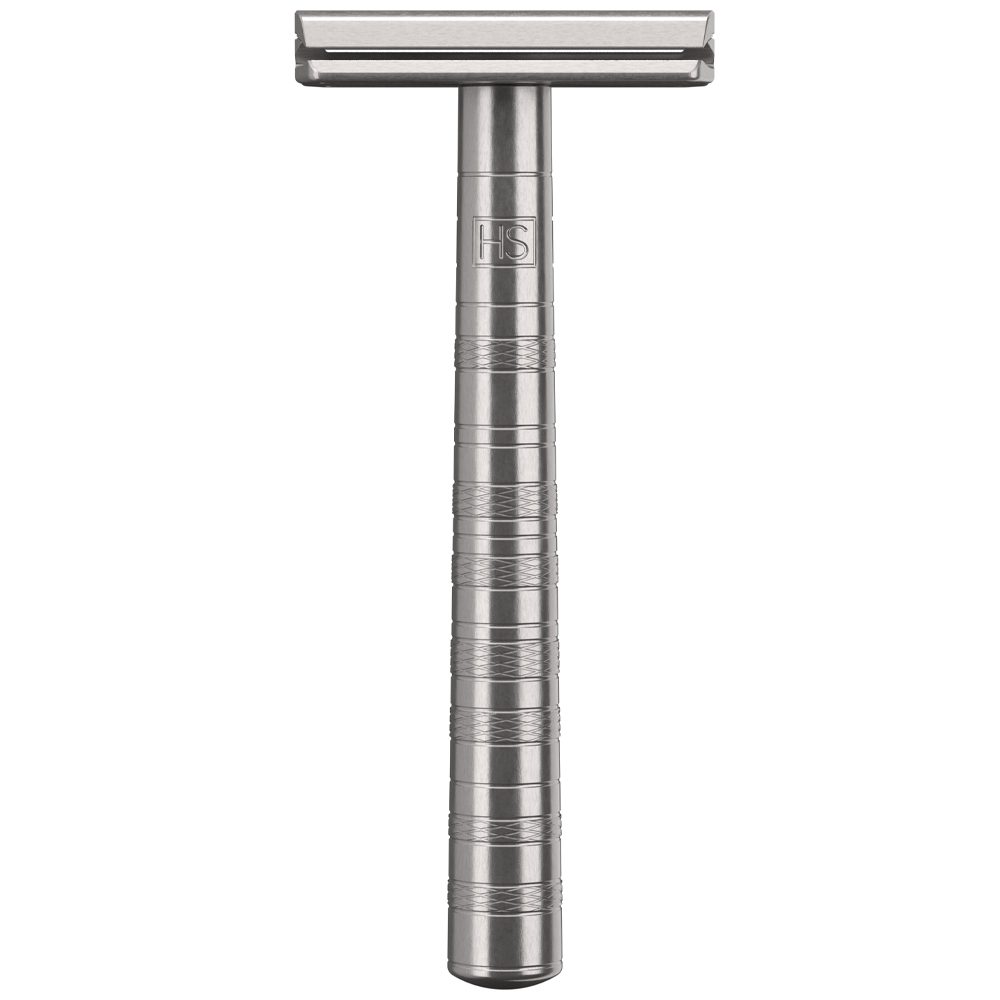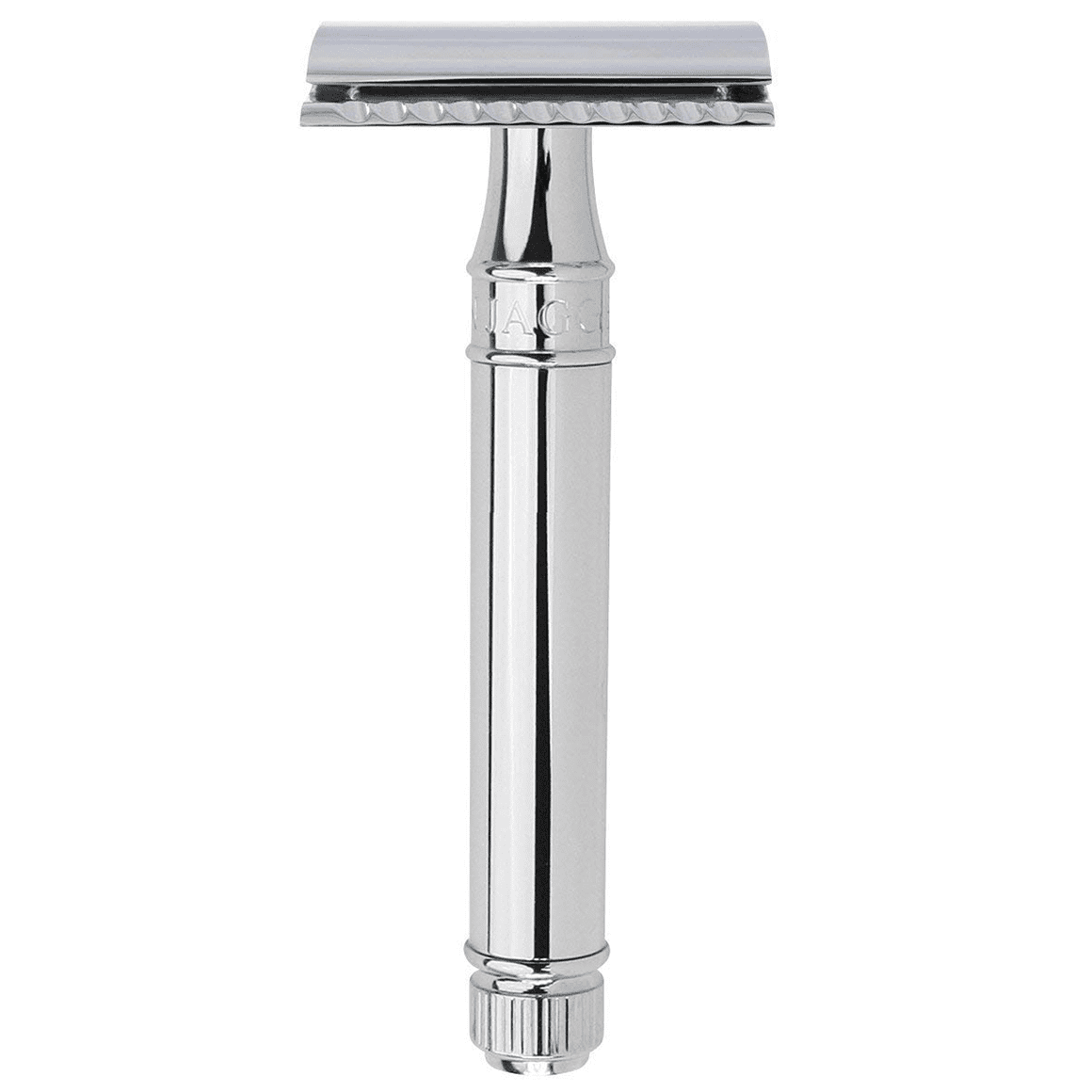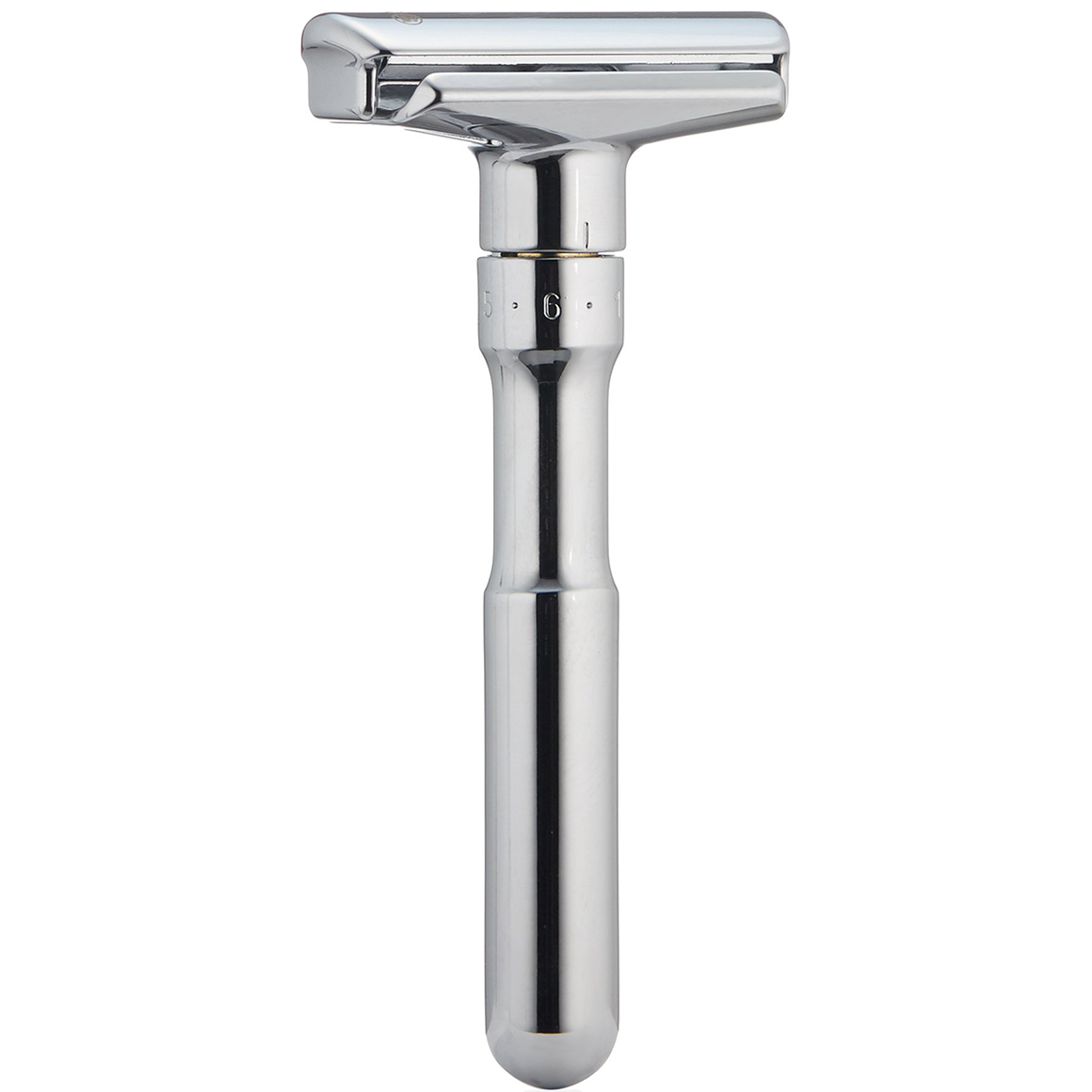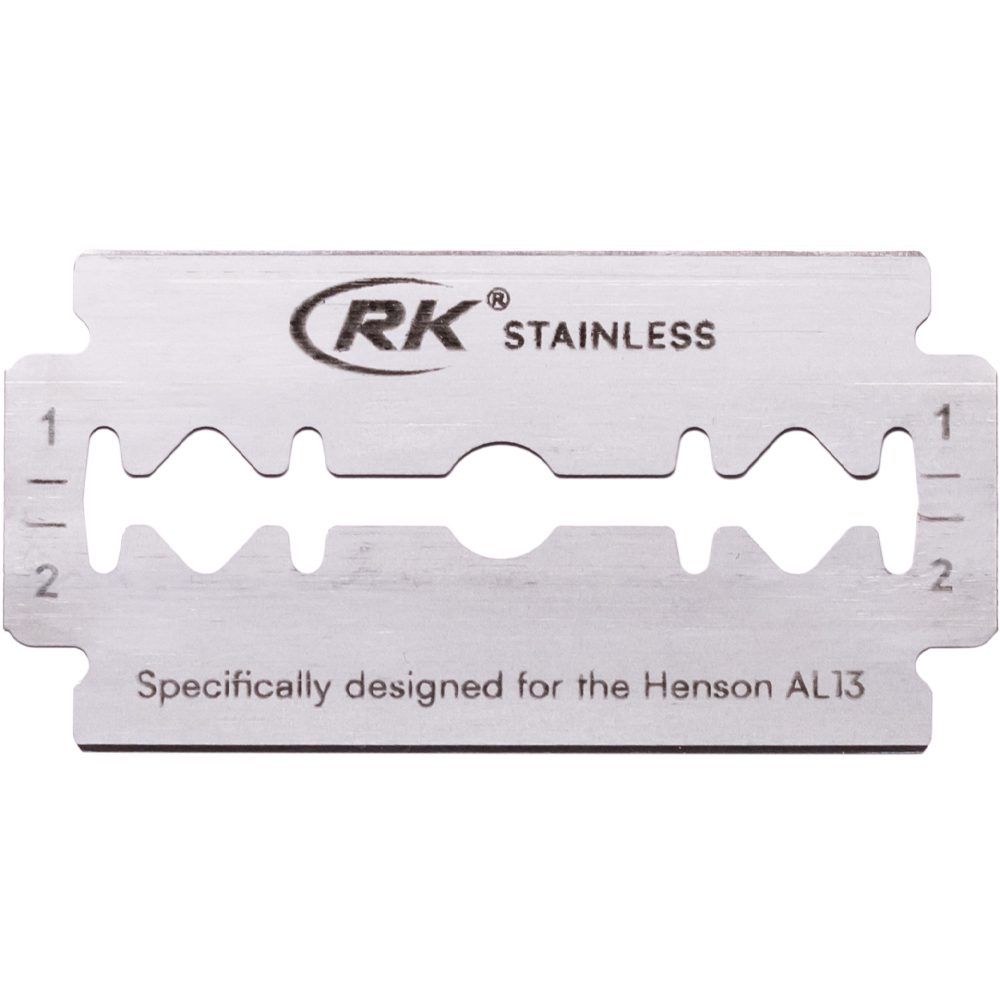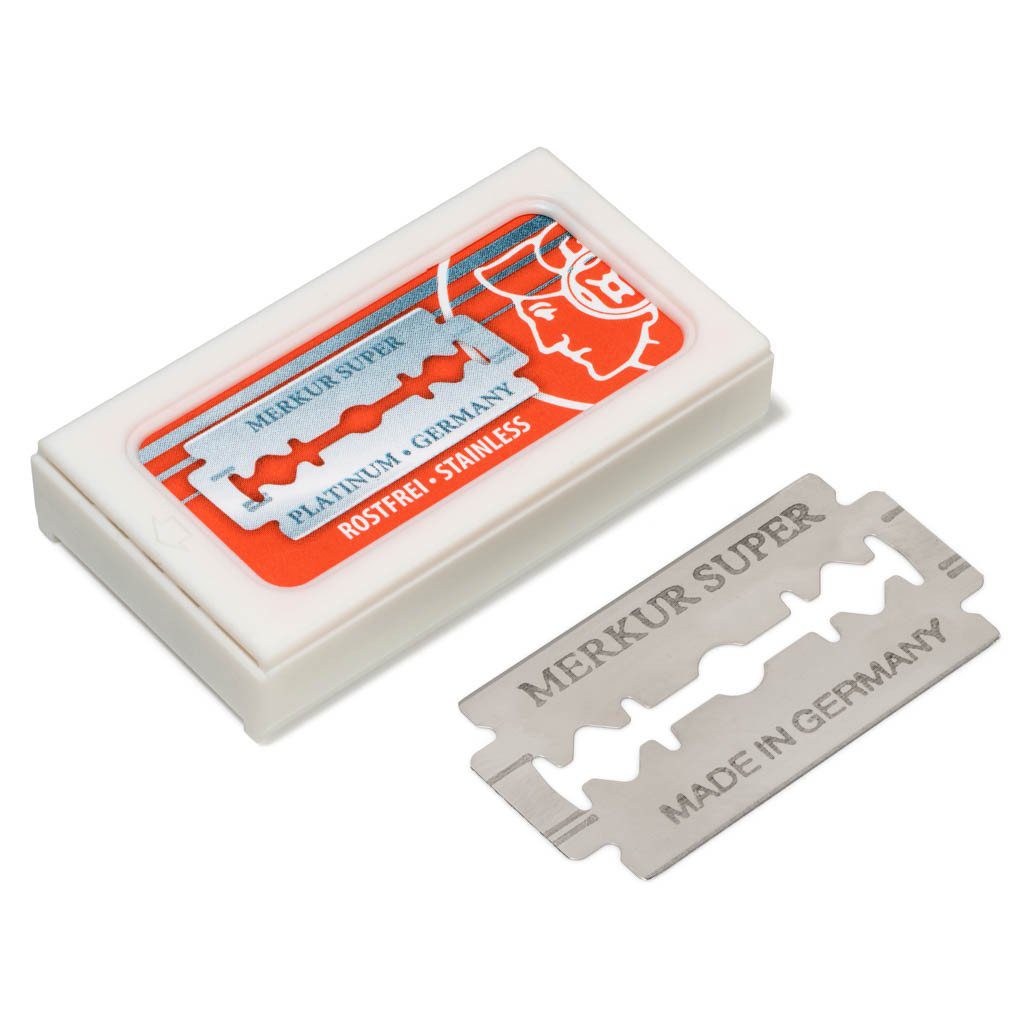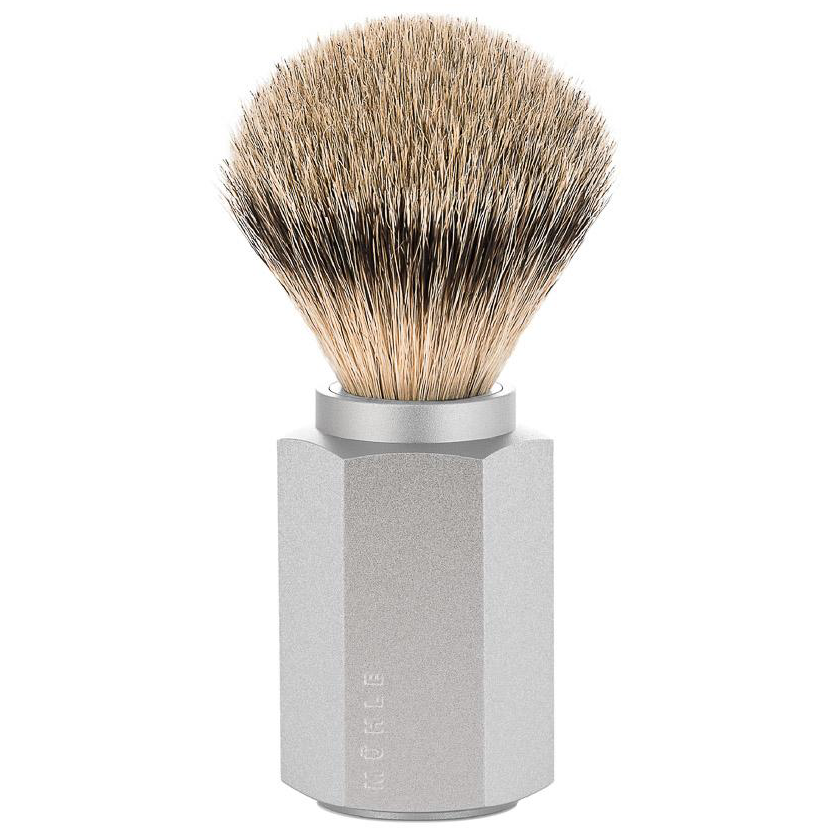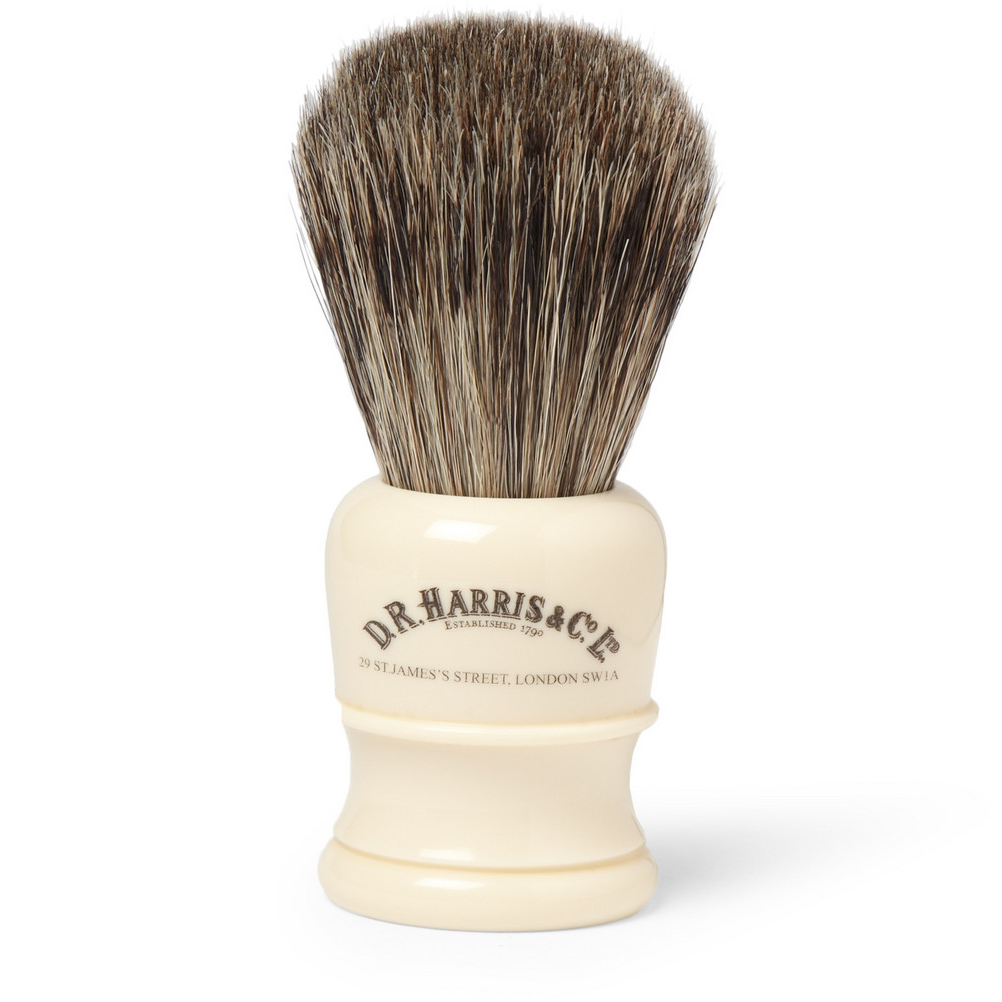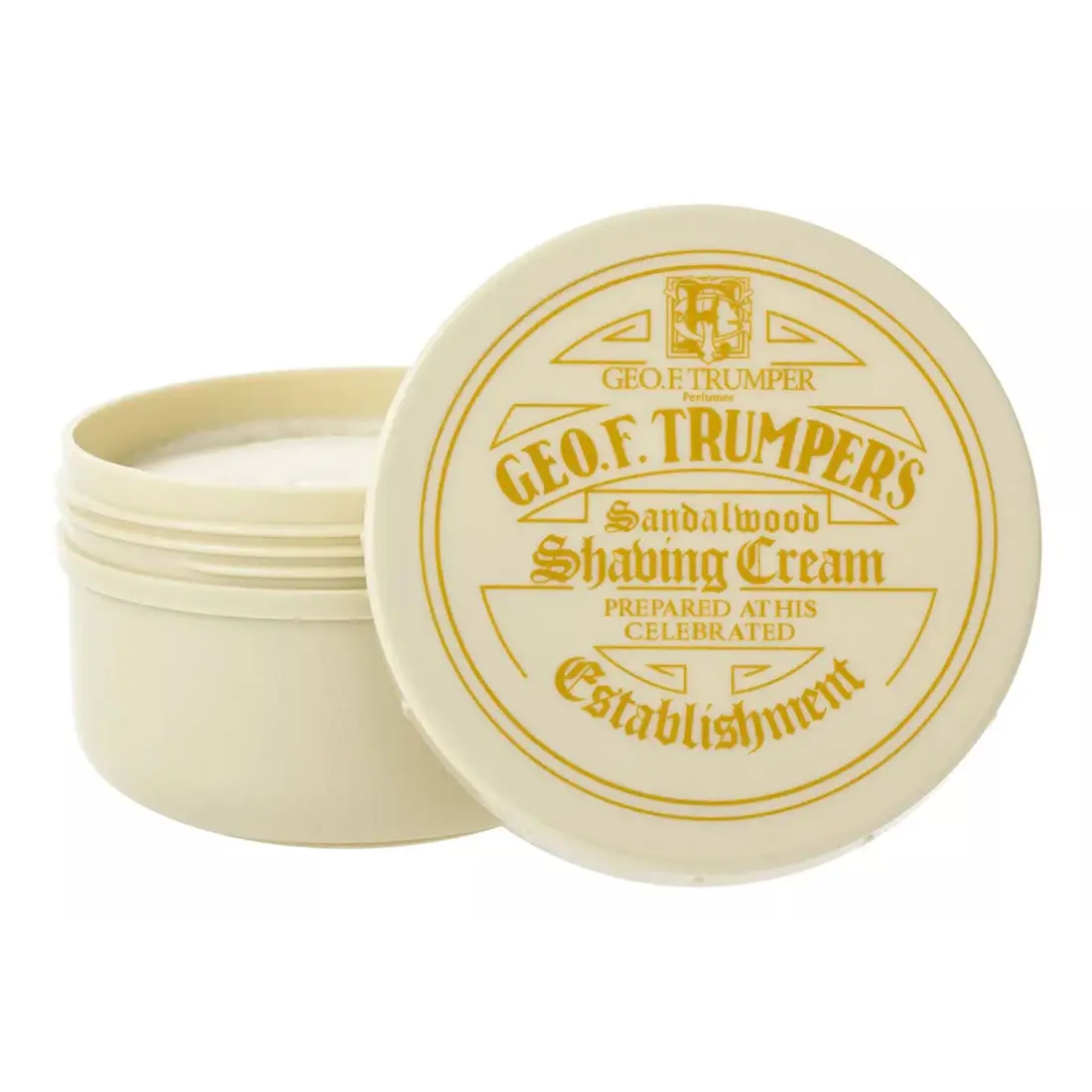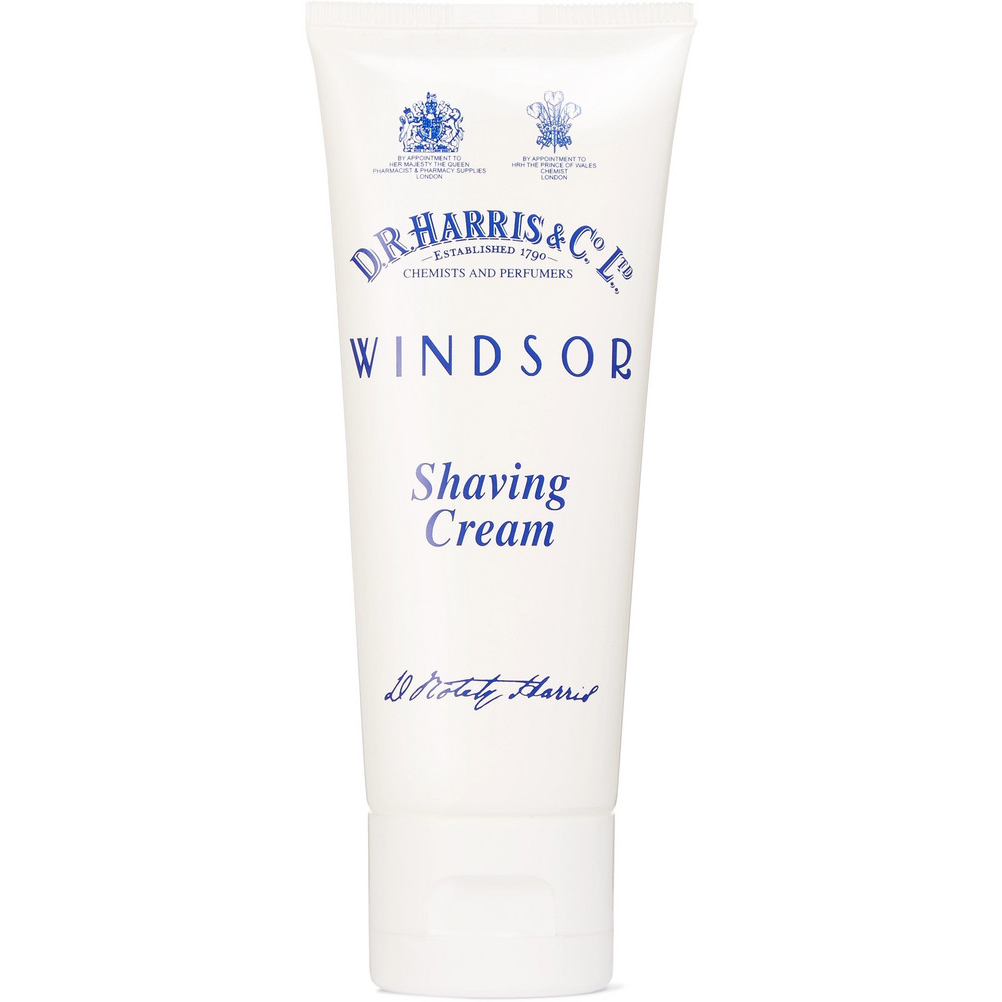How to Shave with a Double-Edge Safety Razor
While using an old-school single-blade razor may seem a bit antiquated – given the plethora of 3-, 4-, 5- and even 6-blade options available in your local supermarket these days – it offers multiple benefits, including closeness of shave, the satisfaction that comes with mastering a time-honoured skill, and value for money. Plus a double-edge safety razor will just look infinitely cooler on your bathroom shelf.
However, switching from cartridges to a single blade means you’re going to have to relearn some of the techniques you currently use to shave. But fear not – below you’ll find Ape’s foolproof guide (as well as a handy video tutorial) to the best approach, along with some expert tips to get help you master this advanced-level grooming tool.
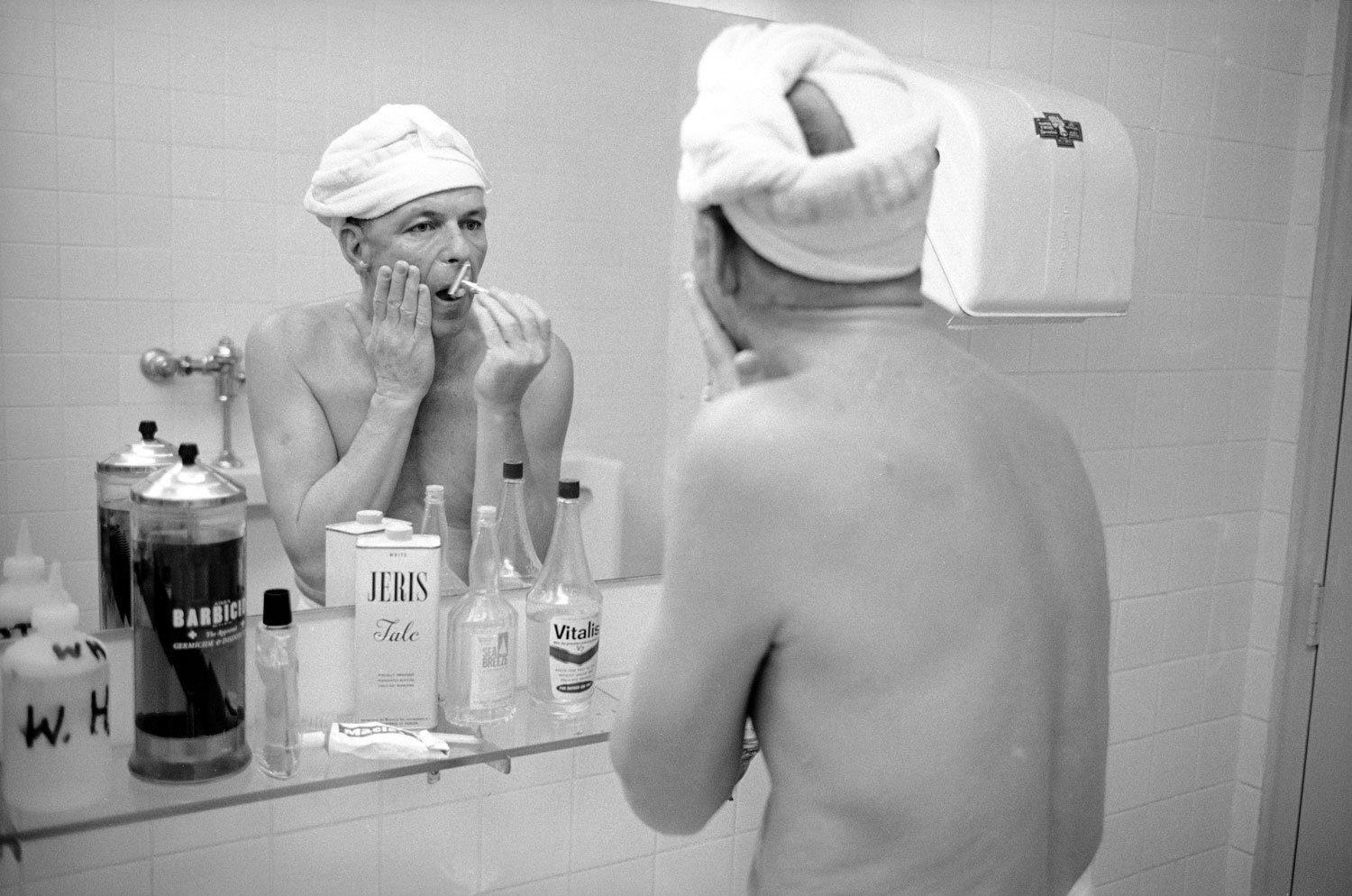
Frank Sinatra shaving with a double-edge razor
3 Of The Best Double-Edge Safety Razors
If you haven’t already done so, you’re going to need to purchase a double-edge safety razor. These days you will be spoilt for choice at all price points, but the best versions are crafted from high-quality metal and have a little weight to them (look for those weighing 56 grams or more), providing greater balance and a more responsive hand feel. Here are Ape’s top 3 recommendations.
The Deluxe Option: Henson AL13
There are regular old razors, then there are the precision-engineered masterpieces designed by Henson Shaving. By drawing on decades of experience producing intricately machined parts for the aerospace industry, the Canadian brand has managed to create one of the most precise and safest shaving tools on the market.
Using a scientific approach, Henson has angled the blade and reduced the distance it sticks out to the smallest possible degree (33 microns to be precise). As a result, it’s almost impossible to cut yourself.
Add a lifetime warranty to that and you’ve got one of the best value-for-money propositions on the shaving market.
The Budget Proposition: Edwin Jagger DE89 Chrome Plated Double-Edge Safety Razor
While we are deeming this the budget option, it’s far from “cheap”. It boasts a comfortable weight and balance, with a blade angle suited for both new and experienced double-edge wet shavers alike. The flawlessly smooth chrome handle is finished nicely at the collar with Edwin Jagger branding, a British shaving company based in Sheffield.
The Pro Option: Merkur Futur Chrome Plated Polished Finish Razor
For medium-to-pro-level shavers, the Merkur Futur is the only choice. This acclaimed safety razor is entirely adjustable, with six variable blade settings: a higher number = a closer shave, but with increased risk of nicks and cuts. Made to exacting standards in Germany, the Futur is a technically-advanced, heavyweight razor that delivers a clean, smooth, effortless shave.
Other Tools You’ll Need
Achieving the perfect, irritation-free shave doesn’t just start and end with your choice of razor. Oh no, you’re going to need a few more things in your dopp kit arsenal.
Blades
- Henson RK Shaving Stainless DE Razor Blades 100 Pack
- Merkur Double Edge Safety Razor Blades 20 Pack
Your safety razor may come with a blade or two to get you started. But even so, you’re going to need to replace them at some point; the average safety razor blade lasts around a week (approximately 6 shaves).
Just like cartridges, not all razor blades are made the same. There are various grindings, coatings and metallurgies available on the market, so it pays to try different brands until you find the one that works best for your individual skin type and shaving technique.
A Shaving Brush
With any traditional shaving method – whether you opt for a safety razor or you’re the type of psychopath who prefers a straight-edge (“cut throat”) razor – you’ll need a decent shaving brush. Combined with a quality shaving cream (below), a shaving brush will help deliver a rich, creamy lather that reduces razor drag and irritation, while also helping prep the hairs by lifting and softening them, so you can cut them easier.
- Muhle HEXAGON Silver Handle Silvertip Badger Shaving Brush
- D.R. Harris Pure Badger Starter Shaving Brush
Badger hair shaving brushes have long been considered the gold standard, but those looking for a more animal-friendly option will find a wealth of excellent synthetic brushes on the market these days. If you’re going down the classic route, there are various grades of badger hair, but we find Silvertip to offer the perfect balance of performance and value.
It’s important to try any shaving brush in your own hand before committing to buy – they vary in length, width and shape, meaning some will feel more comfortable than others.
A Shaving Cream
- Geo. F. Trumper’s Shave Cream Tub
- D R Harris Windsor Shaving Cream Tube
The perfect accompaniment to your shaving brush, a decent shaving cream is a must. Gentlemen suffering with dry or sensitive skin should look for a formulation rich in lubricating Glycerin, which provides a protective layer that allows your blade to glide over your face, minimising nicks, cuts and irritation.
Also prioritise creams made with natural oils and ingredients such as jojoba and almond. They are better for your skin and body, and aren’t “oily” – allowing them to be rinsed off easily.
How To Shave With A Double-Edge Razor
Preparation
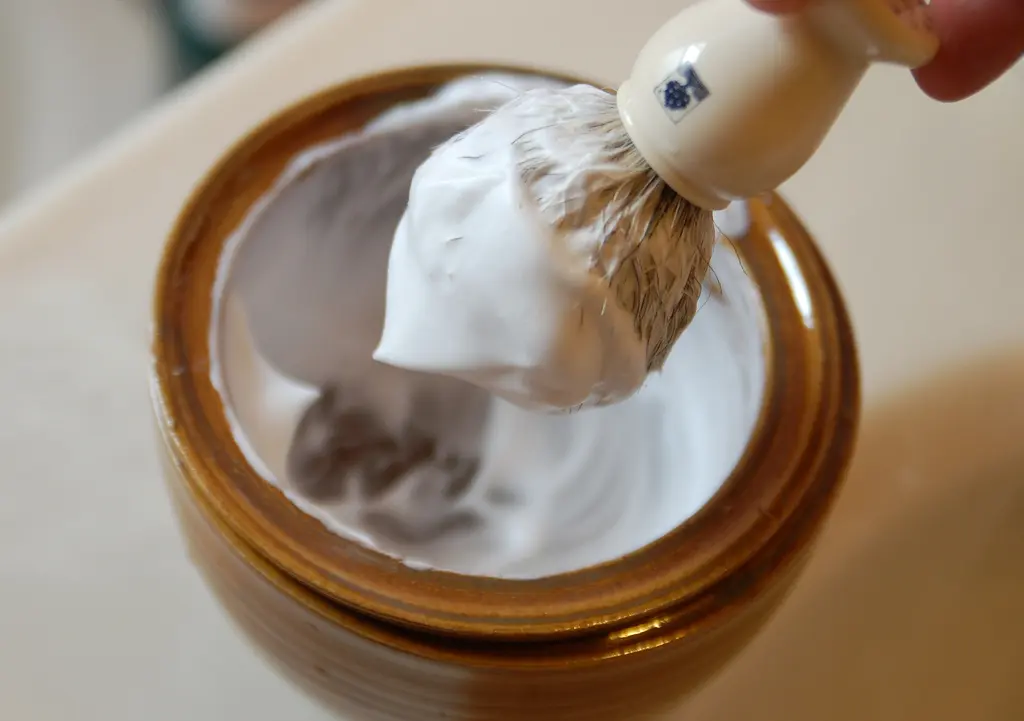
Fail to prepare, prepare to fail – never has this adage been more true than when it comes to dragging a razor-sharp blade across your face. In time, once you’re completely comfortable with your new razor, you can think about cutting some corners, but beginners should to prep their skin thoroughly and meticulously. And this starts with creating the perfect lather.
Place a small amount of shaving cream in a shaving bowl or mug (you can even use your hand if you’re on a budget), then dampen your shaving brush, shake off the excess, and work the tips in a circular motion in the shaving bowl until you have whipped up a rich, meringue-like substance.
Apply to your face using circular motions to lift and prep the hair for cutting, aiming for complete coverage. Reapply as necessary.
Shaving Instructions
- Wash your face and beard with hot water or apply a warm towel. Better yet, shave straight after coming out of the shower. All of these things will soften your facial hair, allowing for a closer and more comfortable shave.
- Whip up your lather and then apply a generous amount of shave cream with a shaving brush to the beard area. Remember to apply in circular motions and aim for complete coverage.
- Visually check your blade doesn’t need replacing, then place your double-edge safety razor against your face with the handle parallel to the floor.
- Tilt the razor down until the blade comes in contact with the skin.
- Shave straight down, about an inch for each stroke. Shave at a pace that’s comfortable to you: if you’re unsure of yourself start at about one stroke per half second and adjust to suit. Remember to let the weight of the razor do the work – don’t press down or apply too much pressure. It’s often beneficial to divide your face into flat segments, like a diamond, shaving each segment to avoid twists and turns.
- Shave straight down, re-lather, then repeat the straight down shave. Don’t concern yourself with getting a particularly close shave at this point: aim for just looking presentable. Do this for a week or so, then if you wish you can try a straight-up pass.
- After shaving, wash the beard area thoroughly with warm water to remove all traces of shaving cream residue then splash with cold water to close the pores. You may wish to follow with an aftershave balm but this step isn’t essential seeing as you’ve already used a high-quality shave cream. Your daily facial moisturiser will work just as well here instead.
